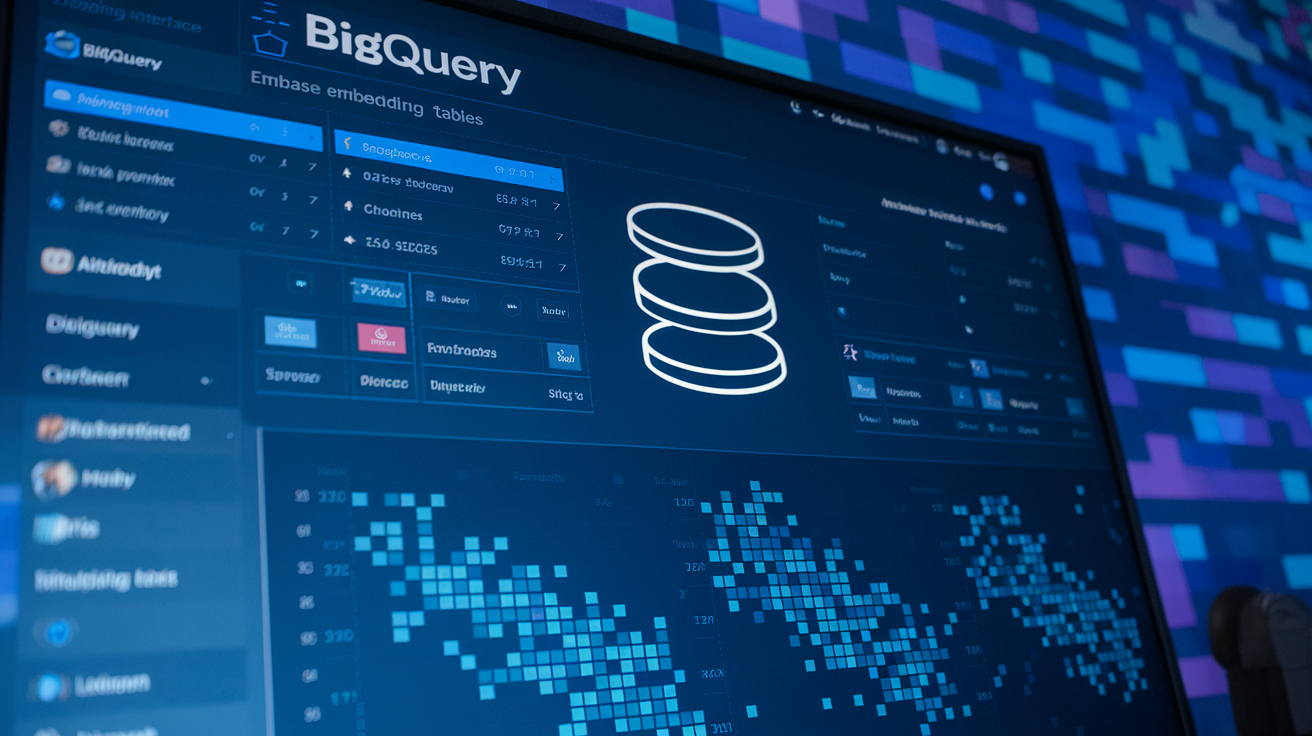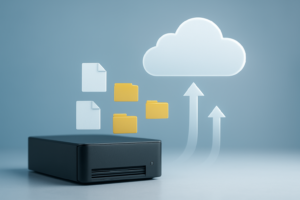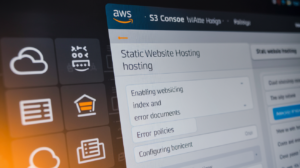Ever stared at a massive dataset and thought, “There’s gold in here somewhere—if only I could mine it properly”? Data scientists and analysts, I feel your pain.
Machine learning can transform your raw data into actionable insights, but the journey from messy data to powerful embeddings isn’t always clear.
This step-by-step guide will show you exactly how to create and leverage vector embeddings in BigQuery—no more jumping between platforms or wrestling with compatibility issues.
The process is simpler than you might think. Google’s BigQuery ML now handles the entire embedding pipeline within a single ecosystem, making what used to take days possible in minutes.
But here’s the question that keeps many teams stuck: what’s the right approach for your specific data challenges?
Understanding Raw Data for Embeddings

What are embeddings and why they matter
Ever tried explaining a joke to someone who just doesn’t get it? That’s kinda what computers feel like when processing text, images, or audio. Embeddings solve this problem.
Embeddings are basically numerical representations of data that capture their meaning and relationships. Think of them as translating human concepts into a language machines can understand.
Why should you care? Because embeddings:
- Turn fuzzy human concepts into precise vector math
- Make semantic search possible (finding content based on meaning, not just keywords)
- Power recommendation systems that actually work
- Enable clustering of similar items without explicit labels
When you search for “red shoes” and see similar styles in different colors – that’s embeddings at work.
Types of data suitable for embedding generation
Almost any data with inherent patterns can be transformed into embeddings:
- Text: Product descriptions, customer reviews, support tickets
- Images: Product photos, user-generated content, diagnostic images
- Audio: Customer service calls, voice commands
- Structured data: User behaviors, transaction histories, clickstream data
The key is having enough examples for the embedding model to learn meaningful patterns. One lonely data point won’t cut it.
Setting up your BigQuery environment
BigQuery makes embedding generation surprisingly straightforward, but you need the right setup:
-
Create a dataset to house your raw data and embeddings
CREATE DATASET your_project.embeddings_dataset -
Set up permissions – make sure your account has
bigquery.adminor equivalent -
Enable the necessary APIs:
- BigQuery API
- BigQuery Connection API
- Vertex AI API (if using Google’s embedding models)
-
Configure compute resources based on your data volume
- Standard SQL queries work for smaller datasets
- For massive data processing, consider BigQuery ML slots
No need to stress about infrastructure – BigQuery’s serverless architecture handles the heavy lifting.
Preparing Your Data in BigQuery

Data cleaning techniques for optimal embeddings
Garbage in, garbage out. That’s especially true when creating embeddings in BigQuery.
Start by removing duplicate records. They’ll skew your embeddings and waste processing resources. A simple SELECT DISTINCT or window functions can handle this.
Strip out special characters and formatting that don’t contribute semantic value:
SELECT REGEXP_REPLACE(text_column, r'[^\w\s]', '') AS cleaned_text
FROM your_table
Don’t forget about case normalization. Lowercase everything unless case genuinely carries meaning in your domain:
SELECT LOWER(text_column) AS normalized_text
FROM your_table
Remove stopwords if they’re diluting your embeddings’ meaning. Words like “the,” “and,” and “is” rarely add value but take up processing space.
Normalizing and transforming text data
Text normalization isn’t just nice-to-have—it’s essential for quality embeddings.
Tokenization breaks text into digestible chunks. BigQuery ML can handle this automatically, but understanding the process helps:
SELECT SPLIT(cleaned_text, ' ') AS tokens
FROM your_cleaned_table
Stemming and lemmatization reduce words to their base forms, connecting “running,” “runs,” and “ran” as the same concept.
Need to preserve context? Try n-grams instead of single words:
SELECT ML.N_GRAMS(tokens, 2, 2) AS bigrams
FROM your_tokenized_table
Handling numerical features
Numbers aren’t just numbers when it comes to embeddings.
Scale features to prevent magnitude-driven distortions. Use MIN-MAX scaling:
SELECT (number_col - MIN(number_col) OVER()) /
(MAX(number_col) OVER() - MIN(number_col) OVER()) AS scaled_feature
FROM your_table
Or standardize with Z-score if your data follows normal distribution:
SELECT (number_col - AVG(number_col) OVER()) /
STDDEV(number_col) OVER() AS standardized_feature
FROM your_table
Binning continuous variables sometimes helps embeddings capture patterns better:
SELECT ML.BUCKETIZE(age, [0, 18, 30, 50, 120]) AS age_group
FROM your_table
Addressing missing values
Missing values will wreck your embeddings if you don’t handle them properly.
For numerical data, decide intelligently: mean/median imputation works for random missingness, while zero-imputation might make sense for absence-indicating values.
SELECT IFNULL(numerical_col, (SELECT AVG(numerical_col) FROM your_table)) AS imputed_col
FROM your_table
For text, consider empty string replacement or “UNKNOWN” tokens depending on your model’s needs.
Flag missing values with indicator columns when the absence itself carries meaning:
SELECT
original_col,
CASE WHEN original_col IS NULL THEN 1 ELSE 0 END AS is_missing
FROM your_table
Generating Embeddings in BigQuery

Using BigQuery ML functions for embeddings
Ever tried turning raw text into something a machine can understand? That’s what embedding functions do in BigQuery ML.
BigQuery now lets you generate vector embeddings right where your data lives. No need to export anything! Just use the ML.GENERATE_EMBEDDING function:
SELECT ML.GENERATE_EMBEDDING(
MODEL `your-project.your_dataset.your_model`,
STRUCT('This is my text to embed' AS content)
) AS embedding
The function returns a vector of floating-point numbers that represent your text in the embedding space. You can use pre-built models from Google’s Model Garden or bring your own model through Remote Models.
Implementing pre-trained models
Pre-trained models save you tons of time and computing resources. BigQuery supports several out-of-the-box:
- text-embedding-gecko: Google’s lightweight text embedding model
- text-multilingual-embedding-gecko: For multilingual applications
- BERT: For more complex language understanding tasks
Here’s how easy it is:
CREATE OR REPLACE MODEL `your_dataset.text_embedding_model`
OPTIONS(MODEL_TYPE='REMOTE', ENDPOINT='https://bigquery.googleapis.com/v2embeddings')
Creating custom embedding solutions
Need something tailored to your specific data? You’ve got options:
- Train custom models with BigQuery ML using TensorFlow
- Import externally trained models
- Connect to custom endpoints via Remote Models
For domain-specific applications, custom embeddings often outperform general-purpose ones. Financial services, healthcare, and legal industries typically benefit most from customization.
Optimizing for performance and cost
Embedding generation isn’t free – both in terms of money and processing time. Here are some smart optimization strategies:
- Batch processing: Generate embeddings in batches rather than one-by-one
- Caching: Store frequently used embeddings to avoid regeneration
- Right-sizing: Choose the right model complexity for your task
- Vector pruning: Remove unnecessary dimensions in your embeddings
Smart engineers monitor their embedding costs. Set up budgets and alerts in Google Cloud to avoid surprises on your bill.
Advanced Embedding Techniques

A. Multi-modal embeddings with image and text
Gone are the days when you could get by with just text embeddings. The real magic happens when you combine different data types.
In BigQuery, you can now create embeddings that merge visual and textual information. Think product listings with images and descriptions, or medical records with scans and notes.
Here’s a quick implementation:
CREATE OR REPLACE MODEL mydataset.multimodal_embeddings
OPTIONS(
model_type='MULTIMODAL_EMBEDDING',
embedding_dimensions=1024
) AS
SELECT
image_url,
text_description,
metadata
FROM product_catalog;
The beauty of this approach? You’re capturing semantic relationships that would be impossible with single-mode embeddings. A picture of a red dress and the text “crimson evening gown” will cluster together, even without exact matching terms.
B. Time-series data embedding strategies
Time-series data is tricky. You can’t just treat each timestamp as an independent point.
The most effective approach in BigQuery is to use sliding windows. Take a chunk of sequential data points and embed the pattern, not just the individual values.
WITH time_windows AS (
SELECT
ARRAY_AGG(value ORDER BY timestamp LIMIT 24) AS day_pattern
FROM sensor_readings
GROUP BY DATE(timestamp)
)
CREATE MODEL mydataset.timeseries_embeddings
OPTIONS(model_type='AUTOENCODER') AS
SELECT day_pattern FROM time_windows;
This preserves temporal relationships that matter. Two trading days with identical closing prices but different volatility patterns will have very different embeddings.
C. Fine-tuning embedding dimensions
The number of dimensions in your embedding space isn’t just a random choice.
Too few dimensions, and your model can’t capture complex relationships. Too many, and you’re wasting compute while increasing noise.
Start with these rules of thumb:
| Data Complexity | Suggested Dimensions |
|---|---|
| Simple text | 128-256 |
| Images | 512-1024 |
| Multi-modal | 1024-2048 |
Then test query performance. If similar items aren’t clustering as expected, bump up dimensions. If queries are slow, try reducing them.
Don’t just set it and forget it. Fine-tuning your dimensions can give you 2-3x performance improvements.
Storing and Managing Embeddings

Efficient storage structures for vector data
When you’ve generated a batch of embeddings, you’ll need a smart way to store them. BigQuery offers several options that balance performance with cost-effectiveness.
Arrays in BigQuery work surprisingly well for small to medium-sized embeddings. For those dense 768-dimension BERT vectors? A simple ARRAY<FLOAT64> will do the job. Here’s the kicker though – once you start dealing with thousands of high-dimensional vectors, performance can take a hit.
For serious vector operations, consider these approaches:
-- Option 1: Simple array structure
CREATE TABLE embeddings.simple_vectors (
doc_id STRING,
embedding ARRAY<FLOAT64>,
timestamp TIMESTAMP
);
-- Option 2: Partitioned for better performance
CREATE TABLE embeddings.partitioned_vectors (
doc_id STRING,
embedding ARRAY<FLOAT64>,
timestamp TIMESTAMP
) PARTITION BY DATE(timestamp);
Partitioning by date or another dimension can dramatically speed up queries and reduce costs when you’re working with massive embedding collections.
Version control for embeddings
Embeddings change. Models get updated. Data shifts. Without version control, you’re setting yourself up for a world of pain.
Track your embeddings with these essentials:
- Model identifiers – which model generated this embedding?
- Training timestamps – when was the model trained?
- Version numbers – explicit versioning for your embedding sets
CREATE TABLE embeddings.versioned_vectors (
doc_id STRING,
embedding ARRAY<FLOAT64>,
model_id STRING,
model_version STRING,
embedding_created TIMESTAMP
);
This approach lets you run A/B tests between different embedding versions or gracefully roll back if a newer embedding set introduces problems.
Metadata management for traceability
The embedding itself is only half the story. Without proper metadata, you’re flying blind.
Good metadata captures:
- Source data info (which documents/records produced this embedding)
- Processing pipeline details (what preprocessing steps were applied)
- Quality metrics (how “good” is this embedding based on your evaluation criteria)
A solid metadata structure might look like:
CREATE TABLE embeddings.metadata (
embedding_id STRING,
source_table STRING,
source_column STRING,
preprocessing_steps ARRAY<STRING>,
similarity_score FLOAT64,
tokens_count INT64,
notes STRING
);
This metadata becomes invaluable when debugging model performance or when you need to trace back issues to their source. Think of it as the breadcrumb trail that helps you understand what happened and why.
Querying and Using Embeddings

Vector Similarity Search Implementation
Ever tried finding the nearest dessert shop when you’re craving ice cream? That’s basically what vector similarity search does with your data. In BigQuery, implementing this is surprisingly straightforward.
First, get your embeddings in order:
SELECT
embedding_id,
embedding,
(1 - ML.DISTANCE(embedding, [0.2, 0.3, 0.1, ...], 'COSINE')) AS similarity_score
FROM
your_embeddings_table
ORDER BY
similarity_score DESC
LIMIT 10;
This query returns the top 10 most similar items to your input vector. The magic happens with ML.DISTANCE which calculates how “far apart” two vectors are.
Want to search by example instead? Just grab an existing embedding:
WITH query_vector AS (
SELECT embedding
FROM your_embeddings_table
WHERE item_id = 'my_reference_item'
)
SELECT
t.item_id,
t.item_name,
(1 - ML.DISTANCE(t.embedding, q.embedding, 'COSINE')) AS similarity
FROM
your_embeddings_table t, query_vector q
ORDER BY
similarity DESC
LIMIT 20;
The beauty here? No extra services needed – it’s all happening inside BigQuery.
Integrating with Downstream Applications
Getting your embeddings to play nice with other systems isn’t rocket science.
For web applications:
- Create a BigQuery view exposing your embeddings
- Set up a Cloud Function that queries this view
- Add a simple API endpoint that your frontend can call
def get_similar_items(request):
item_id = request.args.get('item_id')
query = f"""
WITH query_vector AS (
SELECT embedding FROM embeddings WHERE id = '{item_id}'
)
SELECT id, name, (1 - ML.DISTANCE(embedding, query_vector.embedding, 'COSINE')) AS score
FROM embeddings, query_vector
ORDER BY score DESC LIMIT 5
"""
results = bq_client.query(query).result()
return jsonify([dict(row) for row in results])
For batch processing systems, schedule regular exports to Cloud Storage in formats like Parquet or JSON that other applications can easily consume.
Building Recommendation Systems with Embeddings
Recommendation systems with embeddings don’t need to be complicated. The core idea is simple: items with similar embeddings will appeal to similar users.
Here’s a practical approach:
- Generate embeddings for your items (products, articles, videos)
- When a user interacts with an item, find similar items using vector similarity
- Serve these as recommendations
-- Find similar products for product recommendations
WITH user_viewed_embeddings AS (
SELECT embedding
FROM product_embeddings
WHERE product_id IN (
SELECT product_id
FROM user_views
WHERE user_id = '12345'
ORDER BY view_timestamp DESC
LIMIT 3
)
)
SELECT
p.product_id,
p.product_name,
AVG(1 - ML.DISTANCE(p.embedding, v.embedding, 'COSINE')) AS avg_similarity
FROM
product_embeddings p,
user_viewed_embeddings v
WHERE
p.product_id NOT IN (SELECT product_id FROM user_views WHERE user_id = '12345')
GROUP BY
p.product_id, p.product_name
ORDER BY
avg_similarity DESC
LIMIT 5;
This creates personalized recommendations based on a user’s recent views, without complex ML frameworks.
Real-time Embedding Generation Workflows
Making embeddings in real-time isn’t just possible – it’s becoming essential for dynamic applications.
Two approaches work well here:
-
Streaming inserts with Cloud Functions:
- Set up a Pub/Sub topic for new data events
- Trigger a Cloud Function that generates embeddings via BQML or external APIs
- Insert results back into BigQuery
-
On-demand embedding generation:
- Create a stored procedure that generates embeddings
- Call it directly when new data arrives
CREATE OR REPLACE PROCEDURE generate_embeddings(data_table STRING)
BEGIN
EXECUTE IMMEDIATE FORMAT("""
CREATE OR REPLACE TABLE embeddings_output AS
SELECT
id,
ML.GENERATE_EMBEDDING(
MODEL `your_project.your_dataset.your_model`,
STRUCT(text AS content)
) AS embedding
FROM `%s`
""", data_table);
END;
Call this procedure whenever you need fresh embeddings, either manually or through automated processes.
Performance Monitoring and Optimization
Your embedding system is only as good as its performance. Keep tabs on it.
Monitor these key metrics:
- Query latency (aim for <1s for interactive applications)
- Embedding quality (track relevance scores over time)
- Storage efficiency (embeddings can get big, fast)
Optimization tricks that actually work:
- Partition tables by date or category to reduce scan sizes
- Materialize frequently used similarity calculations
- Use smaller embedding dimensions when possible without sacrificing quality
When things get complex, consider these advanced techniques:
- Implement approximate nearest neighbor search for large datasets
- Use clustering to pre-filter candidates before exact similarity calculations
- Cache popular queries to reduce computation overhead
-- Create a materialized view for frequent similarity lookups
CREATE MATERIALIZED VIEW popular_item_similarities AS
SELECT
item1_id,
item2_id,
(1 - ML.DISTANCE(e1.embedding, e2.embedding, 'COSINE')) AS similarity
FROM
embeddings e1
JOIN
embeddings e2
ON
e1.item_id IN (SELECT item_id FROM popular_items)
AND e2.item_id != e1.item_id
WHERE
ML.DISTANCE(e1.embedding, e2.embedding, 'COSINE') < 0.2;
This pre-calculates similarities for your most viewed items, drastically cutting query time.

Transforming raw data into useful embeddings in BigQuery is a powerful process that opens up new possibilities for data analysis and machine learning applications. By following the steps outlined in this guide—from understanding your raw data requirements to preparing, generating, and managing embeddings—you can harness the full potential of vector representations within your BigQuery environment. The advanced techniques discussed provide options to refine your embeddings for specific use cases, while the storage and management strategies ensure your vector data remains organized and accessible.
As you implement these practices in your own projects, remember that embedding quality directly impacts downstream applications. Start with smaller datasets to experiment with different embedding approaches before scaling to your full data. Whether you’re building recommendation systems, search functionality, or analytical tools, the foundation you’ve established through this process will serve as a critical infrastructure for your AI-driven solutions. Consider revisiting your embedding strategy periodically as models and techniques continue to evolve in this rapidly advancing field.




















